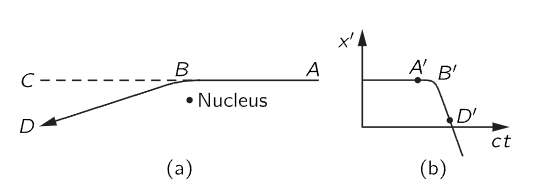
تاريخ الفيزياء

علماء الفيزياء


الفيزياء الكلاسيكية

الميكانيك

الديناميكا الحرارية


الكهربائية والمغناطيسية

الكهربائية

المغناطيسية

الكهرومغناطيسية


علم البصريات

تاريخ علم البصريات

الضوء

مواضيع عامة في علم البصريات

الصوت


الفيزياء الحديثة


النظرية النسبية

النظرية النسبية الخاصة

النظرية النسبية العامة

مواضيع عامة في النظرية النسبية

ميكانيكا الكم

الفيزياء الذرية

الفيزياء الجزيئية


الفيزياء النووية

مواضيع عامة في الفيزياء النووية

النشاط الاشعاعي


فيزياء الحالة الصلبة

الموصلات

أشباه الموصلات

العوازل

مواضيع عامة في الفيزياء الصلبة

فيزياء الجوامد


الليزر

أنواع الليزر

بعض تطبيقات الليزر

مواضيع عامة في الليزر


علم الفلك

تاريخ وعلماء علم الفلك

الثقوب السوداء


المجموعة الشمسية

الشمس

كوكب عطارد

كوكب الزهرة

كوكب الأرض

كوكب المريخ

كوكب المشتري

كوكب زحل

كوكب أورانوس

كوكب نبتون

كوكب بلوتو

القمر

كواكب ومواضيع اخرى

مواضيع عامة في علم الفلك

النجوم

البلازما

الألكترونيات

خواص المادة


الطاقة البديلة

الطاقة الشمسية

مواضيع عامة في الطاقة البديلة

المد والجزر

فيزياء الجسيمات


الفيزياء والعلوم الأخرى

الفيزياء الكيميائية

الفيزياء الرياضية

الفيزياء الحيوية

الفيزياء العامة


مواضيع عامة في الفيزياء

تجارب فيزيائية

مصطلحات وتعاريف فيزيائية

وحدات القياس الفيزيائية

طرائف الفيزياء

مواضيع اخرى
Bremsstrahlung
المؤلف:
Richard Feynman, Robert Leighton and Matthew Sands
المصدر:
The Feynman Lectures on Physics
الجزء والصفحة:
Volume I, Chapter 34
2024-03-26
1025

Fig. 34–9. A fast electron passing near a nucleus radiates energy in the direction of its motion.
Suppose that there are charged particles in a piece of matter and a very fast electron, say, comes by (Fig. 34–9). Then, because of the electric field around the atomic nucleus the electron is pulled, accelerated, so that the curve of its motion has a slight kink or bend in it. If the electron is travelling at very nearly the speed of light, what is the electric field produced in the direction C? Remember our rule: we take the actual motion, translate it backwards at speed c, and that gives us a curve whose curvature measures the electric field. It was coming toward us at the speed v, so we get a backward motion, with the whole picture compressed into a smaller distance in proportion as c−v is smaller than c. So, if 1−v/c≪1, there is a very sharp and rapid curvature at B′, and when we take the second derivative of that we get a very high field in the direction of the motion. So when very energetic electrons move through matter they spit radiation in a forward direction. This is called bremsstrahlung. As a matter of fact, the synchrotron is used, not so much to make high-energy electrons (actually if we could get them out of the machine more conveniently, we would not say this) as to make very energetic photons—gamma rays—by passing the energetic electrons through a solid tungsten “target,” and letting them radiate photons from this bremsstrahlung effect.